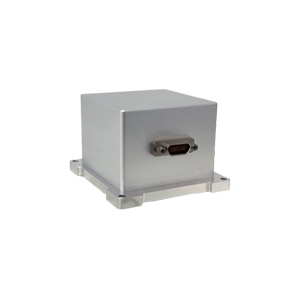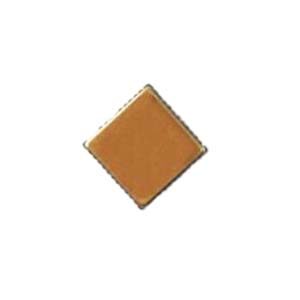ER-MIMU-053 High Precision Stable Control MEMS IMU
Introduction
Inertial Measurement Unit, referred to as IMU, is a device to measure angular velocity and acceleration of the three axis of the object. Gyroscope and accelerometer are the core devices of inertial navigation system (INS). With the built-in accelerometer sensor and gyroscope, the IMU can measure the linear acceleration and rotation angular velocity from three directions and can obtain the attitude, velocity and displacement information of the carrier through the resolving.
ER-MIMU-053 uses MEMS accelerometer and gyroscope with high quality and reliability, RS422 and external communication. Default baud rate 921600 (customized). With X, Y, Z three-axis precision gyro, X, Y, Z three-axis accelerometer with high resolution, can be output by RS422 X, Y, Z three axis of gyroscope and accelerometer's original hexadecimal complement data (including gyro hexadecimal complement the numerical temperature, angle, the accelerometer hexadecimal temperature, the acceleration hexadecimal complement number); It can also output float dimensionless values of the gyroscope and accelerometer processed by the underlying calculation.
A simple operation is required to connect our products to your system and obtain IMU data without the 15-pin plug provided by our company. At the same time, the size and weight of our products can be significantly reduced by removing the base plate housing.
Features
Size:70*65*45(with shell)/43.2*43.2*35.5 (without shell and baseboard)
Weight:220(with shell) /100(without shell and baseboard)
OEM modular design, strong applicability
-40~80°C temperature compensation
Gyro bias instability: <0.1deg/hr
Gyro bias stability (10s 1σ): <1deg/hr
Gyro angular random walk: <0.05 °/√h
Accelerometer bias repeatability: 100ug
Accelerometer bias stability (10s) (1σ): <50ug
Accelerometer class II non-linearity coefficient: <100ug/g²
Application
Stabilization of Cameras & Platforms
Azimuth, attitude, position measuring and keeping in GNSS-assisted INS
Pitch, roll measuring in AHRS for UAV
Motion survey and keeping in MRU
Attitude & azimuth keeping, positioning in IMU
Guidance, navigation, control in tactical MEMS system
Stabilizing in satellite antenna, target tracking system
Robotic Control & Orientation in autonomous machines, unmanned vehicles
Specifications
| Item | Parameter | Unit | ||
| Gyro performance | A | B | C | |
| Range | 400 | 400 | 400 | deg/s |
| Scale Factor at 25°C | 16000 | 20000 | 20000 | LSB/deg/s |
| Scale Factor Repeatability (1σ) | <50 | <100 | <50 | ppm |
| Scale Factor VS Temperature (1σ) | 300 | 500 | 500 | ppm |
| Scale Factor Non-Linearity (1σ) | <300 | <300 | <300 | ppm |
| Bias Instability(1σ 25℃) | <0.3 | <0.3 | <0.1 | deg/hr |
| Bias stability (10s 1σ) | <3 | <2 | <1 | deg/hr |
| Angular Random Walk | <0.125 | <0.125 | <0.05 | °/ √h |
| Bias Repeatability(1σ 25℃) | <3 | <2 | <1 | deg/hr |
| Accelerometer performance | ||||
| Range | 30 | g | ||
| Bias Stability (10s 1σ) | <50 | ug | ||
| Bias Repeatability | 100 | ug | ||
| Bias Temp Coefficient | <20 | ug/℃ | ||
| Bias Temp Hysteresis | <1.5 | mg | ||
| Scale Factor Non-linearity | <500 | ppm | ||
| Scale Factor Month Repeatability | <30 | ppm | ||
| Scale Factor Temp Coefficient | 10 | ppm/℃ | ||
| Class II Non-linearity Coefficient | <100 | ug/g² | ||
| Scale Factor | 250000 | Lsb/g | ||
| Environment and power | ||||
| Operate temperature | -40~+80 | ℃ | ||
| Storage temperature | -55~+105 | ℃ | ||
| Power supply | 6~12V | V | ||
| Power (power supply 6V) | 2 | W | ||
| Communication interface | RS-422 | |||
| Physical characteristics | ||||
| Size | 70×65×45(with shell)
43.2×43.2×35.5 (without shell and baseboard) |
mm | ||
| Weight | 220(withshell)
100(without shell and baseboard) |
g | ||
Dimension

Application Techniques
1.Do you know the core components that give precise control to automated equipment
2.High-performance IMU: A New Benchmark for Precise Measurement and Control
3.Industrial Versatile Tool: High Cost-Performance IMU Meets Diverse Needs
4.Flight safety secrets: The core role of high-precision IMUs in aviation
5.Revolutionizing drone navigation: How to redefine high performance and low cost
6.From flight control to fault diagnosis, how does IMU dominate drones?








 Economical MEMS Gyroscope
Economical MEMS Gyroscope